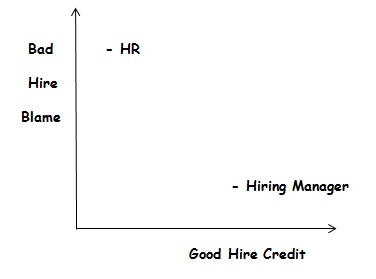You’ve heard it before – “Here at ACME, we only hire A players”.
Nice! Except you and I both know they’re not all “A” players. You might have thought they were when you hired them, but hiring managers miss. People change. Talent gets bored. Your company is dysfunctional. Which is why you have to measure your people, evaluate them and put them through the corporate equivalent of the NFL Combine at least once a year.
That’s right. You’re going to have to do a performance review on them. And that means they may hate you.
But wait – what if we told you there’s a way that you can measure the performance of your employees, push for more and be considered their personal agent while you do that? You can be the one they trust the most – but only if you develop a employee-centric approach to goal setting and the performance feedback loop that follows.
How do you do that? Join us for the next FOT webinar entitled, “Get My Agent On the Phone“, and we’ll break down our goal setting/performance management plan designed to make your direct reports believe you are on their side, including the following focus points:
· Making sure the goals you set represent the Five Most Important Things (5MIT) for the employee in question. What are the most important things your employee has to focus on this year? If you can only talk to them about five things, what would those things be and why? Smart managers skip discussing the busy work and get to what’s going to change the game – for the company and the employee. We’ll give you the 411 on how to do that.
· Offering up ways each of the Five Most Important Things might be measured in the months that follow. You want measurements – we get it. The key in offering up how you’re going to measure the 5MIT in question is not to limit yourself. The more you box yourself in, the less innovation you get. We’ll show you how to set the expectation your direct reports are going to be measured without actually taking performance off the table. PS – They’ll love you for this if you deliver it in the right way.
· Having Thoughts on what “Good” and “Great” performance looks like in each area. That’s right – we’re going through a goal setting process not because HR told us we had to, but because it can set us up to be a great performance coach for the rest of the year. Nothing sets you up as a coach more than owning the difference between “good” and “great”. We’ll tell you how to reserve the “great” tag for employees who really innovate, drive change or add true value in the job they’re in.
· Including a section that details “What’s In It for Me?” for each area of focus. Being an agent is about talking about how chasing great performance in the area in question could be great for the employee’s career. We’ll show you how to frame this as the agent/coach. It’s the most important thing you can do.
· Putting it all in an easy to follow, informal format. If you go beyond one page, you’re making goal setting too complex. List everything we’ve described to this point in one page, and make the headers conversational in nature, and you win. We’ve got some format to share with you.
You can be viewed as a career agent for your employees rather than a run of the mill corporate bureaucrat. Join us for “Get My Agent on the Phone” and we’ll show how the secret sauce to goal setting and follow-up conversations can dramatically change the positioning of what you do in performance management.

